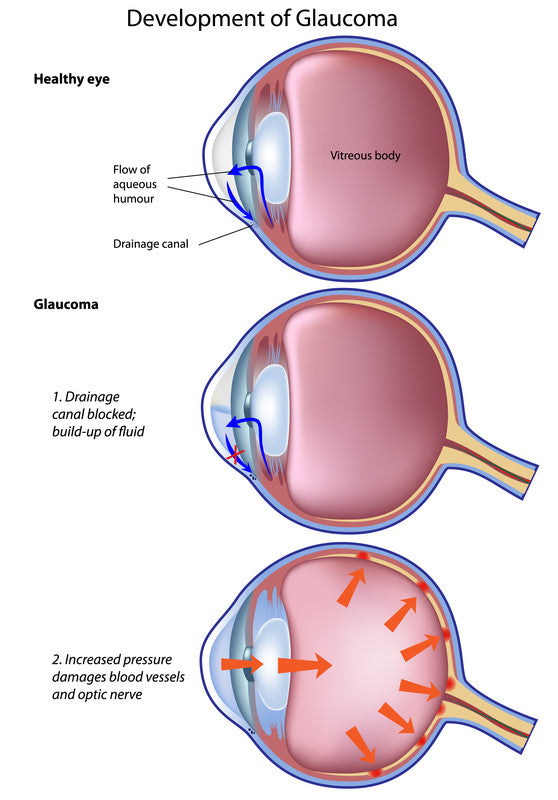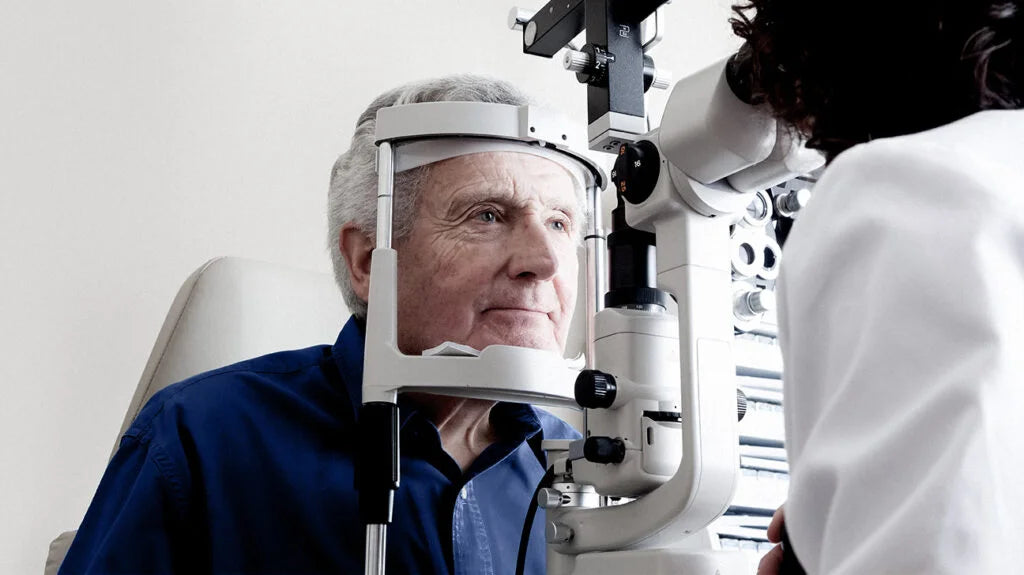Glaucoma - damage to the optic nerve
Glaucoma is a group of eye conditions that can cause irreversible vision loss if left untreated. Glaucoma often develops gradually and without symptoms, making regular eye examinations crucial for early detection and management.
Learn more about Glaucoma
What are the symptoms of Glaucoma?
In its early stages, Glaucoma often presents no symptoms, which is why regular eye exams are essential for early detection. As the condition progresses, individuals may experience peripheral vision loss, tunnel vision, eye pain, blurred vision, and halos around lights.
Who is at risk of developing Glaucoma?
While Glaucoma can affect anyone, certain factors may increase your risk, including age (those over 60 are at higher risk), family history of Glaucoma, high intraocular pressure, certain medical conditions like diabetes and high blood pressure, and long-term use of corticosteroids.
Can Glaucoma be treated?
While there is no cure for Glaucoma, early detection and treatment can help slow down or prevent further vision loss. Treatment options may include prescription eye drops to lower intraocular pressure, oral medications, laser therapy, or surgery, depending on the severity and type of Glaucoma.
How often should I have my eyes checked for Glaucoma?
It is recommended to have comprehensive eye examinations every 1-2 years, especially if you are over 40 or have risk factors for Glaucoma. Your optometrist can perform tests to measure intraocular pressure, assess the health of your optic nerve, and detect any signs of Glaucoma.

Types of Glaucoma
Glaucoma presents in two distinct forms: Chronic and Acute.
- Chronic Glaucoma develops gradually, stemming from the blockage of the eye's drainage channels. This painless condition is the most prevalent form of Glaucoma.
- Acute Glaucoma strikes suddenly, causing painful blockages in the eye's drainage channels. Urgent treatment is imperative to prevent permanent vision loss.
Glaucoma encompasses various types, each with unique characteristics and causes:
- Primary Open-Angle Glaucoma: The most common type, it results from a partial blockage in the eye's drainage system, leading to increased pressure within the eye.
- Angle-Closure Glaucoma: Characterised by a bulging iris obstructing drainage, causing pressure buildup behind the eye.
- Normal-Tension Glaucoma: Damage to the optic nerve occurs despite normal eye pressure, possibly due to poor blood flow to the optic nerve.
- Developmental Glaucoma: Affects children and infants, often presenting without symptoms.
- Pigmentary Glaucoma: Occurs when drainage channels are obstructed by pigment granules.
If diagnosed with Glaucoma, your Optometrist at Lobb Optical will identify the specific type and recommend tailored management strategies to safeguard your vision.
Prevention is the first line of defence
If you're experiencing any of the symptoms mentioned above, have a family history of Glaucoma, or it's been some time since your last eye examination, our Optometrists at Lobb Optical are here to assist you.


